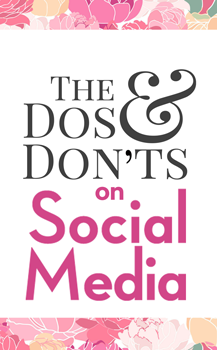 You are not alone if you can't clearly define the differences between branding and marketing. Many people can't, including Fortune 500 CEO's. But whether you are a start-up or just trying to grow - I guarantee knowing the difference will help you be successful. You won't find all the answers here, but my quick primer may be a good start: Branding: A Promise A brand is a "promise" that a company or product delivers. For the Customer: It's getting what they expect. For the Company: It's a promise to customers and colleagues in everything you do. To be successful, you must deliver on that promise consistently. The idea that a brand is a logo, a name or a color is where business failures begin. It's about meeting expectations in what you deliver, and how you deliver it. Think of the most recent PR gaffs by airlines or clothing companies. Were they meeting your expectations for their brand? Probably not if you remember the issue. Those brand failures were not due to an ugly logo. When we love a brand we feel connected, and think we "know" the company. We develop brand expectations for service, quality and delivery. In short, we trust the company. In this way, customers should be considered a large part of defining a brand. So really your brand is "everything" within your company. It is imperative to define what your company stands for if you want a successful brand - even if that brand is YOU. You have to identify your target audience and what they want, define and communicate why you are better than your competitors, and know your brand's purpose. Your brand in turn will direct how you solve problems, how you package products and what products you sell. Some businesses know WHAT they are from day one, and as long as they stay small and keep the same employees, then they may not need to repeat this exercise. However, for most businesses, things change - sales drop, people leave, or a competitor threatens your sales. Then what do you do? If you define what your brand stands for now, then it becomes easier to make decisions later - who you should hire, what products should you sell, how your communications should sound, and even what your office environment should look like. The key to unlocking the power of your brand is involving your employees and customers. How do they describe your brand? What are their expectations? Are you delivering on your promises? Marketing: A Process Marketing is defined by the Chartered Institute of Marketing as "The management process responsible for identifying, anticipating and satisfying customer requirements profitably". Marketing, then, is an integral part of your brand. It helps you to communicate the promise that you want customers and prospects to know about. Your marketing should also be based on your brand positioning, personality, values and tone of voice that have all been defined and communicated among your staff. In essence, marketing is what you do to get your message or promise to customers, while your brand is how you keep the promise made through delivery to customers and colleagues. And marketing requires answers such as:
Need more help to define your brand, or create a successful marketing campaign. We can help. Ask us how.
0 Comments
 Congratulations! You started a business. Everyone is telling you to network, and you go to it. But did anyone warn you that in your haste, there is a certain online etiquette to consider when searching for business opportunities, or bad habits that actually will limit your ability to build a network? Here are a few quick Dos and Don’ts that will make everyone's experience better. Social Networking Etiquette: Do Do separate personal from transactional: It's time to create a new identity if your personal posts are too often about selling something. Think "Oprah Winfrey" vs "Oprah". Imagine if her brand was not separate from her personal life? If you have friends and want to keep them, you can reference your business occasionally, and set up links to your business networks. Invite them to follow your new networks. If interested, they will. The idea is to grow your network, not to alienate friends and family who just want a personal connection. Your family and kids will thank you for it. Do find your online voice: Be very clear about what type of message you want to send people through social networking. What is your brand vs the brand of the products you represent? Are you actively engaged in social networking or re-posting. Are you a connector, or an observer? Remember, you’re building a reputation online with people you know very well, or may not know at all—and they will judge you based on what you have to say and how you respond. A whole branding discussion could start here... if interested, here's a good branding article. Do add social media links to your marketing: Make sure that anything you do online is reciprocated offline. This means that you should include your social networking links on promotional items, business cards, your company website, press releases, and basically anywhere that you want to create a lasting connection. Otherwise, why bother? Post often and consistently: Once you engage with a social network, make the commitment do it consistently. Be it weekly, monthly or daily. But post because you have meaningful content, or add value otherwise, see below. Do engage your audience. Ask questions: What problem does your product solve? Take that solution and pose the question - Who needs this? Take the time to come up with thought-provoking questions that can engage your audience into having a conversation occasionally. In many instances, solving problems will lead to more sharing. People love to tell other people about solutions and great stuff they just learned. This is adding value. Do re-post valuable content: One of the kindest things you can do on a social network to show someone you’re listening, is to share their content. Tell stories. But... make sure it’s good content that you have permission to share, and that your audience will care about it. Is it relatable? Is it funny? Is it educational? All good. Social Networking Etiquette: Don’t Don’t SPAM: Sending out unsolicited ads and messages makes you a spammer. Don't kid yourself. Are you using software to allow people to opt out of your emails? If not, they may end up blocking your profile altogether. Be careful about crossing the line. For example, posting a link to your website on a completely unrelated but popular Facebook page, or in the middle of a Twitter or LinkedIn discussion, is not OK. Likewise, keep personal pages personal. Refer to DO #1. Don't wear out your welcome: Do your customers want to hear from you daily? If you are a roofer, probably not. But if you are a lunch cafe, is monthly often enough? You might want some short "shout-outs" about menus or specials to increase business. Bottom line, THINK about your customers before you post, or they'll stop following you. Don’t have one-way communication: A quick way to lose followers and connections is to talk about yourself or post product ads all the time. Remember, this is “social” media, so consider lightening things up with less formal posts that are conversational. Invite photo submissions, or hold a LIVE stream session. Don’t make every post about you or your business. Pay attention to others and listen for opportunities to jump into conversations in a more strategic and directed way. Always ask, "Why would my customers care about this?," then tell them why. Don’t use bad grammar: Just because it’s social media, it doesn’t give us a pass to use improper grammar. Misspelled words, acronyms and abbreviate words may be OK for text messaging, but If you are representing a brand or personally branding yourself, lay off the shorthand and type your words out. IMHO. Don’t abandon your social networks: When you’re first approaching social networking, it’s tempting to follow every fad and trend of a social network. And with new social networking sites being released all the time, it’s tempting to jump from one to another seeking new ways to make connections. Don’t do it. Pick a social network you really intend to be active on, get good at that first, and then branch into other social networks over time. Entrepreneurs, let the online networking Dos and Don’ts help you get the results you need from your next networking experience. |
Details
Who?Julene Hunter makes good design accessible and affordable. She co-founded two software companies, and has been practicing digital and creative arts in all its forms for over 30 years. She founded GoodInk in 2007. Archives
June 2021
Categories
All
|
|
|
© Julene Hunter retains copyright on all artwork and design created and rights to use for promotion purposes, reproductions, etc. Artwork and images may not be used or reproduced without the artist written permission. Copying Images from this web-site or posting these images to another web-site, without written permission is a copyright violation, and is protected by U.S. Copyright Laws.
© 2015 Google Inc, used with permission. Google and the Google logo are registered trademarks of Google Inc.
© 2015 Google Inc, used with permission. Google and the Google logo are registered trademarks of Google Inc.

 RSS Feed
RSS Feed
